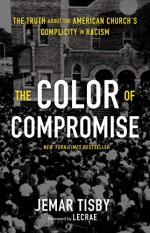
|
| Name: _________________________ | Period: ___________________ |
This test consists of 5 multiple choice questions, 5 short answer questions, and 10 short essay questions.
Multiple Choice Questions
1. When was the first Black Episcopal Church established in New York City?
(a) 1811.
(b) 1784.
(c) 1809.
(d) 1803.
2. Which Black preacher helped found the African Methodist Episcopal Church?
(a) Richard Allen.
(b) Jesse Jackson.
(c) Martin Luther King, Jr.
(d) Richard R. Jones.
3. How does Tisby perceive racism?
(a) As an inevitability.
(b) As a historical myth.
(c) As a social construct.
(d) As a mystery.
4. What historical period coincided with the decline of slavery in Britain?
(a) The Industrial Revolution.
(b) The Late Middle Ages.
(c) The Renaissance.
(d) The American Revolution.
5. What was the term for secret places where enslaved Blacks met to worship?
(a) Hush arbors.
(b) Quiet lanes.
(c) Hidden chambers.
(d) Confidential gardens.
Short Answer Questions
1. How did enslaved Blacks share messages about possible escape plans?
2. Who was the first Black preacher ordained in America?
3. How many people perished during the Middle Passage?
4. According to Tisby, how did most enslaved Blacks respond to the rise of Christian revivalist preachers in the 1700s?
5. What was the first higher education institution to accept women and Black people?
Short Essay Questions
1. What was the Three-Fifths Compromise?
2. What was the impact of Nat Turner's rebellion?
3. What was the impact of the Missouri Compromise?
4. Many white Christians believe that individual conversation and a spiritual awakening will naturally lead to racial equality. What is Tisby's perspective?
5. What evangelical Christian doctrines, outlined by Tisby in Chapter 3, can prevent these churches from taking a stance on social justice issues?
6. Which demographic groups benefitted most from the original Constitution?
7. Why did the Episcopalian diocese originally refuse to admit St. Philip's church?
8. Why did some slaveowners prefer to enslave Africans rather than Native Americans, as explained by Tisby?
9. Why did Johnathan Edwards oppose the African slave-trade?
10. What is the monogenesis theory of humankind?
|
This section contains 581 words (approx. 2 pages at 300 words per page) |

|




